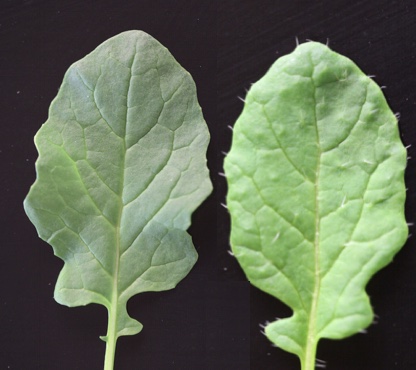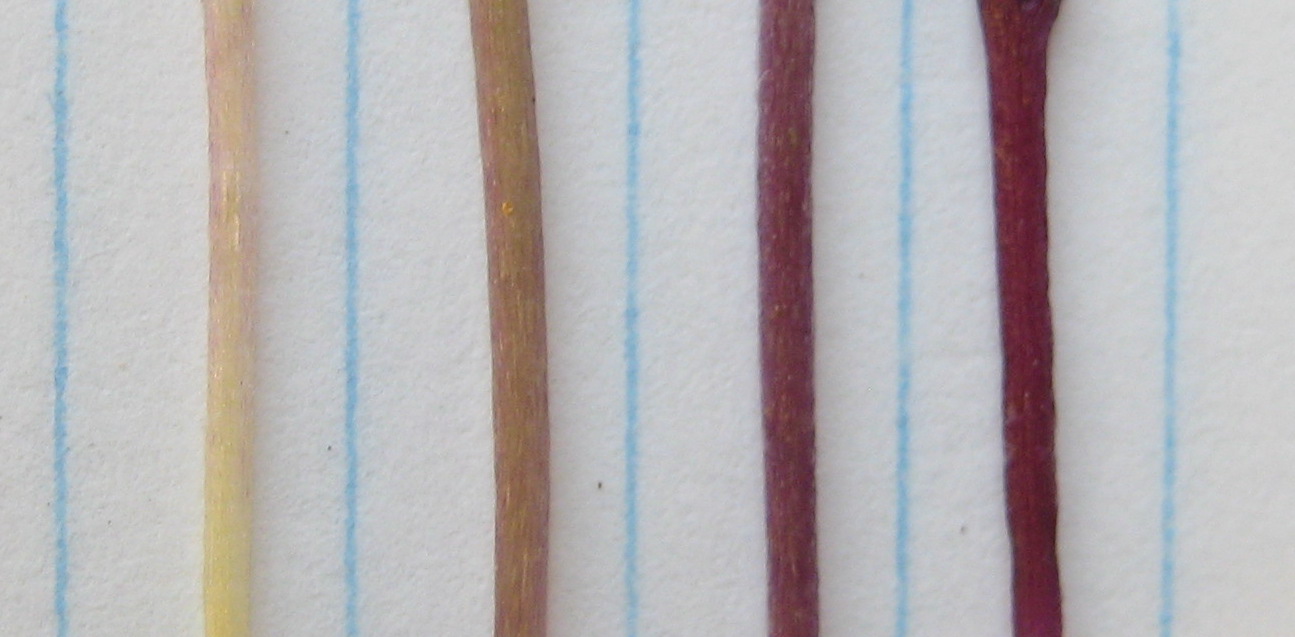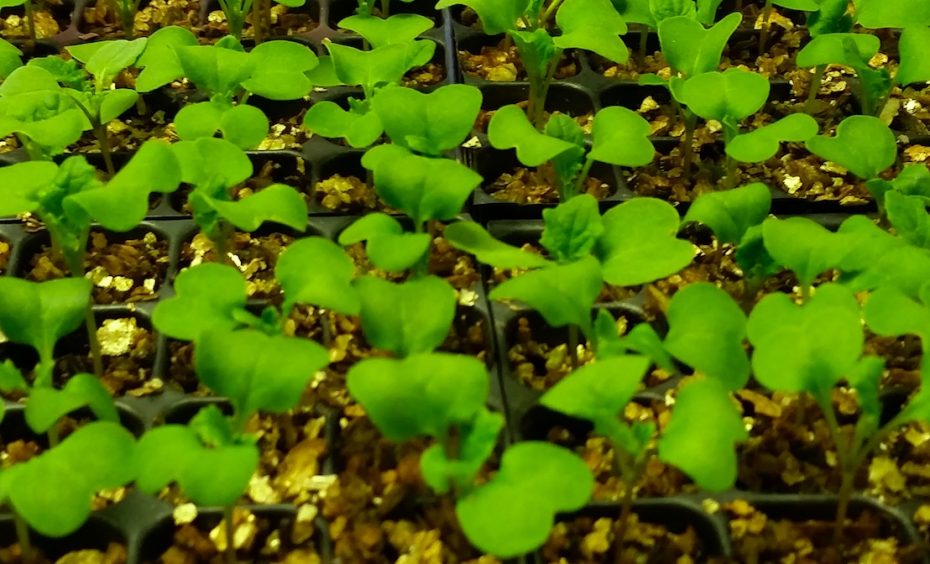Variation is a fundamental attribute of life; understanding its nature is important to all. Wisconsin Fast Plants are an ideal model for teaching this concept, with easily observable variation in many plant traits. This variation can be observed, described, and measured or quantified to gain greater understanding of plant traits. Development of selection experiments allows analysis of recorded data and measuring gain from selection, providing an excellent opportunity for modeling evolution through “artificial” selection.
How can Fast Plants be used to teach about natural selection?
- Within a population of Fast Plants, individual plants can vary in many traits
- Fast Plants respond to their environment! Experiment with different growing conditions to observe different growth patterns
- Genetic stocks have been characterized with variable traits that are distinct and easy to identify
- Expression of purple anthocyanin pigment (Purple Stem stock) is continuous (purple intensity varies between plants)
- Expression of anthocyaninless trait (Non-Purple Stem stock) is discrete (trait is either present or not present)
- Learn more about how to observe and quantify variability in your plants
- Learn more about how to organize data and describe plant populations
- Plant breeding and selection as a model for understanding evolution and natural selection
-

Histograms depict hairiness and gain from selection over three generations.
- Gain from selection is most easily measured in traits that are not influenced by environment
- Plant hairiness (hairs are a type of trichome) is highly variable and minimally influenced by the environment, an ideal candidate for selection experiments!
- Learn more about counting leaf hairs in our recent blog post
- This generalized selection schedule can assist you in planning your classroom experiments

On the left is a hairless (glabrous) leaf, and on the right is a hairy (hirsute) leaf. Density of hairs (trichomes) is variable, likely controlled by multiple genes. Can you increase your plants “hairiness” through selection?

Left to right: plant stems with increasing intensity of anthocyanin expression. Expression of anthocyanin (purple pigment) is variable, dependent on both environment and genetics! Can you increase your plants purple expression through selection?
What kit can I use for investigating variation and selection in the classroom?
- Wisconsin Fast Plants Investigating Artificial Selection Using Plant Populations Kit
- New Seed Variety: Wisconsin Fast Plants Polycots have an easily observable and readily selectable trait, variation in number of cotyledons (seed leaves)
- Learn more (and access a free open source lesson!) in our Polycots blog


